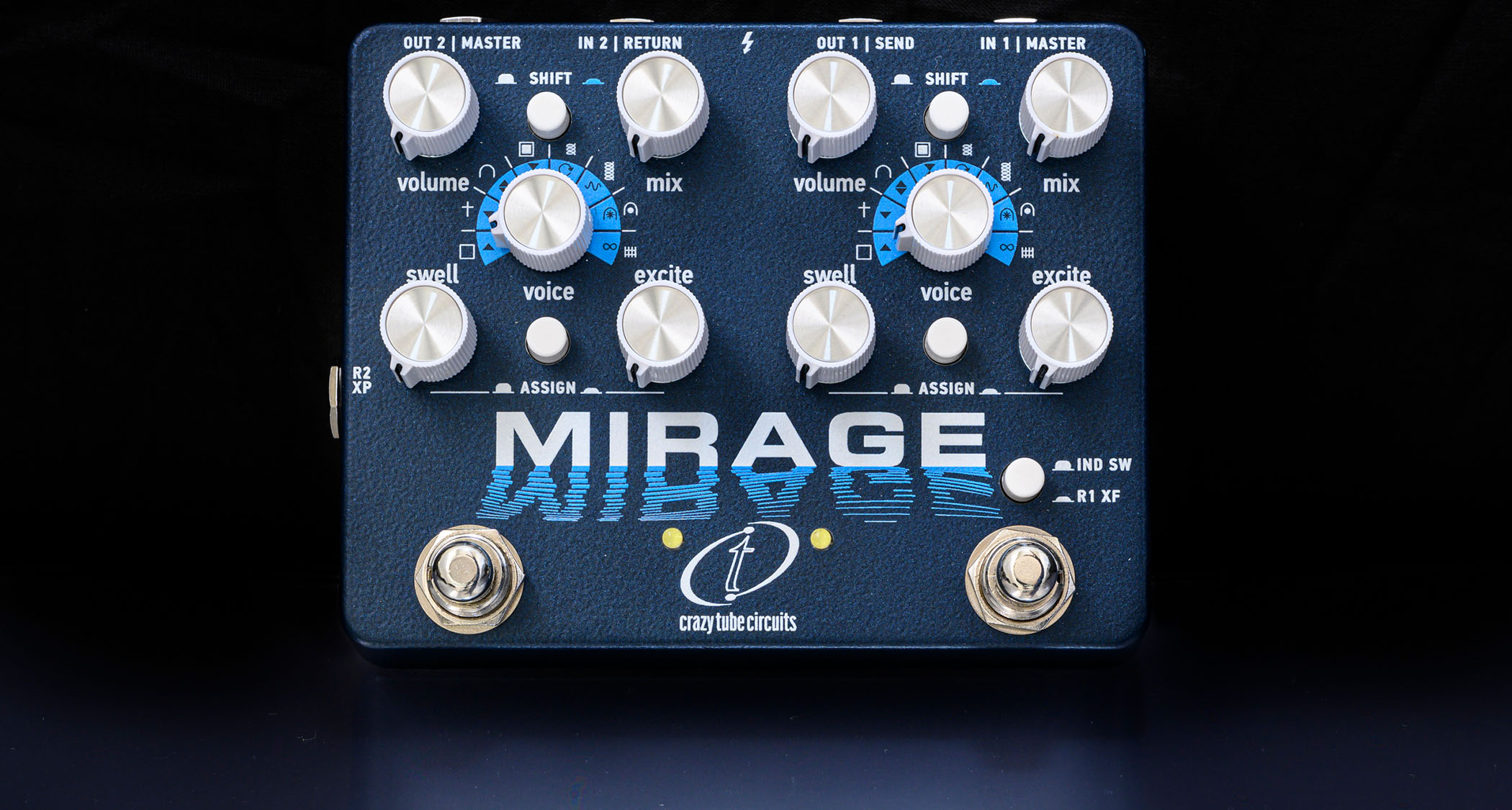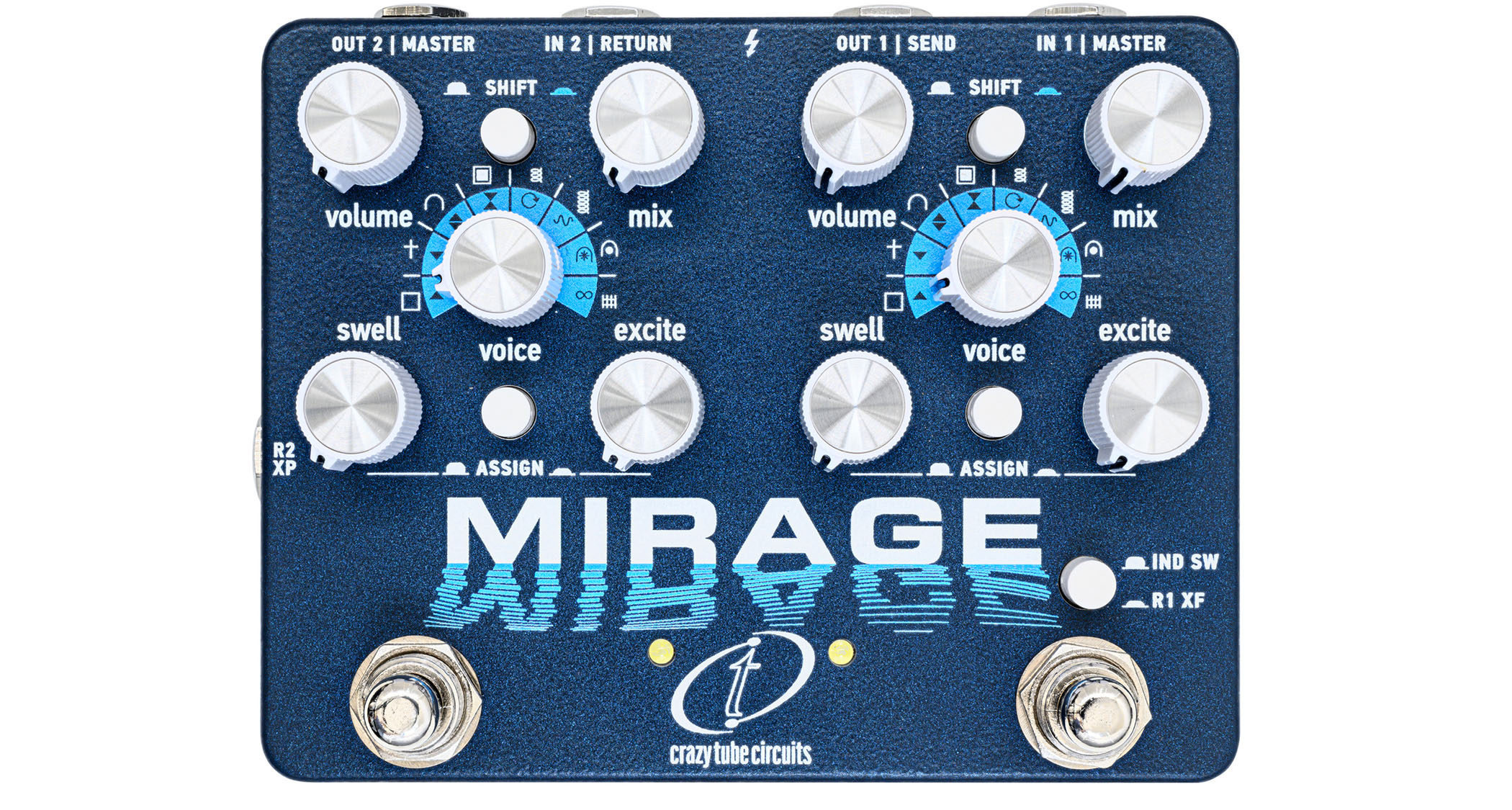“A creative reverb platform built for guitarists, synth players, and sound designers who want studio-grade depth”: With dual reverb engines, 16 algorithms, Crazy Tube Circuits’ Mirage is one serious reverb pedal with no menu-diving required
Mirage is designed for all ambient adventures, from adding some everyday space to soundscape design and shoegaze reveries – and CTC says a stripped-down single-engine version is in the works

Crazy Tube Circuits has positioned itself as a specialist in the twofer overdrive pedal, pairing boost and drive, or different flavours of drive, to give players a powerful yet compact all-in-one gain solution. See the Unobtanium Raw for an example.
But it’s not just gain. CTC's latest, the Mirage, applies the Greek brand’s twofer paradigm to bring us a reverb pedal for all occasions.
There are two reverb engines, each drawing upon 16 newly designed reverb algorithms, that can be run in mono, stereo, split left and right, used as independent mono reverbs… The sky is the limit. And the sounds cover all the usual reverb food groups.
You will find Room, Hall, Plate, Cathedral and Spring reverb algorithms, essential sounds that give you naturalistic sense of space and/or that familiar metallic splash. And then you’ll find the stuff for serious users.

For surf guitarists, players whose will leave their rig on whenever they’ve got a Corbucci movie on the TV, there’s a Springier mode, which is a spring reverb modelled after the larger outboard units or the mechanical tanks you might find only find in a studio. There will be extra splash there.
Or the tantalizingly named Inchindown, which is inspired on Scottish oil tanks, and biggest human-made reverb sounds you’ll hear. Goodbye, dry guitar sound, been nice to know you.
There is a Gated reverb that’s going to be of interest to fans of ‘80s guitar sounds. It has a quick cut-off for “rhythmic punch”. Then we have a modulated reverb, a quartet of different Shimmer modes, a Repeater reverb which does exactly that, “echoes trapped in reverb” that yield “rhythmic, cascading reflections that evolve into ambient textures.”
Want all the hottest music and gear news, reviews, deals, features and more, direct to your inbox? Sign up here.
Yikes. ‘Toto, I have a feeling we’re not in Kansas anymore.’ And it gets potentially weirder with Frozen Hall, which behaves “like a classic hall until you crank decay to max and it freezes into endless sustain”, and Infinite, which is can hold your reverb loop indefinitely. Choose one of these modes, then twist the Swell and Excite knobs to adjust key parameters.
For example, on the Room mode, which is basically a simulation of a mic’d up room – the kind of reverb you’d use everyday – the Swell knob adjusts room size and decay, while the Excite knob adjusts the brightness/darkness of the room.
CTC describes Mirage as a “modular reverb system without the complexity” – and it’s not just for electric guitar. It’ll work gangbusters with a synthesizer, anything that needs a lot of reverb.
There are send/return outputs so you can insert effects between the two reverb engines. There is also an expression pedal input for controlling sounds on the fly. Available now, Mirage is priced €325. See Crazy Tube Circuits for more details.
Jonathan Horsley has been writing about guitars and guitar culture since 2005, playing them since 1990, and regularly contributes to MusicRadar, Total Guitar and Guitar World. He uses Jazz III nylon picks, 10s during the week, 9s at the weekend, and shamefully still struggles with rhythm figure one of Van Halen’s Panama.
You must confirm your public display name before commenting
Please logout and then login again, you will then be prompted to enter your display name.
